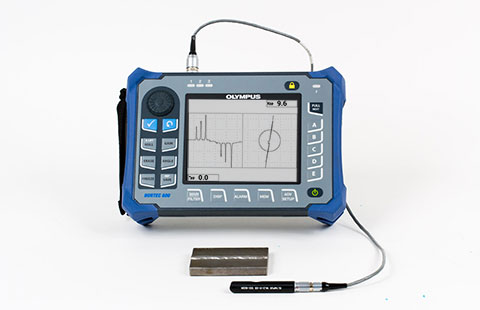Innovative Techniques to Fillet Weld Evaluation and Screening: Enhancing Weld Quality and Conformity Specifications
In the realm of welding, the high quality and stability of fillet welds play a vital role in making sure the architectural soundness and reliability of different industrial components. With the continuous drive for improved performance and conformity with rigorous standards, the expedition of cutting-edge methods to fillet weld evaluation and testing has ended up being critical.
Advanced Non-Destructive Testing Approaches
Making use of cutting edge modern technologies, progressed non-destructive screening approaches play an essential function in making sure the integrity and quality of fillet welds. These methods, such as phased array ultrasonic testing (PAUT) and magnetic particle testing (MPT), offer thorough insights right into the weld's interior structure without creating any kind of damages to the material. PAUT, as an example, makes use of numerous ultrasonic aspects to inspect the weld from different angles, offering a comprehensive visualization of prospective defects like absence of fusion or fractures.
Similarly, MPT is efficient in discovering surface-breaking problems by using a magnetic field and iron bits to the weld location. This approach is specifically useful for identifying suspensions that may jeopardize the weld's stamina. By employing these sophisticated non-destructive testing strategies, weld examiners can properly examine the top quality of fillet welds, guaranteeing conformity with industry standards and guidelines. The ability to spot flaws early not just improves weld high quality however likewise prevents expensive rework or failures in architectural stability, underlining the value of these innovative testing strategies in welding inspections.
Robotics and Automation in Inspection
The assimilation of robotics and automation has actually changed the inspection process for fillet welds, enhancing performance and accuracy in top quality analysis. Robotics use accurate control and repeatability in inspecting welds, making certain reliable and regular results. Automated systems can be programmed to adhere to certain inspection paths, guaranteeing detailed protection of welds and reducing the threat of human error.
Robotic examination systems furnished with sophisticated sensing units can discover and gauge weld features with high accuracy, supplying comprehensive information for analysis. These systems can identify flaws such as splits, lack of combination, and porosity, making it possible for timely rehabilitative activities to be taken. Furthermore, robotics and automation permit real-time data collection and evaluation, supplying instant comments to operators and helping with quick decision-making procedures.
In addition, using robotics and automation in fillet weld inspection improves total performance by minimizing assessment times and enhancing examination throughput. By streamlining the assessment procedure, manufacturers can make certain weld quality and compliance standards are met efficiently, inevitably resulting in cost financial savings and boosted product high quality.
Making Use Of Artificial Knowledge for Evaluation
Man-made intelligence plays a pivotal duty in enhancing the efficiency and accuracy of analysis in fillet weld assessment procedures. By using the power of AI, inspectors can streamline the analysis of weld quality and compliance requirements, resulting in much more dependable and precise outcomes. AI algorithms can swiftly process substantial amounts of data from weld assessments, detecting issues or inconsistencies that may be challenging to determine with the naked eye. This sophisticated innovation allows real-time monitoring of weld high quality, allowing for immediate rehabilitative actions to be taken if any problems are detected.
Moreover, AI systems can pick up from past assessment information, constantly boosting their capability to identify potential defects and inconsistencies in fillet welds. This flexible knowing capability enhances the overall quality assurance procedure, decreasing the probability of human error and ensuring that welds meet the needed requirements. By incorporating man-made intelligence right into fillet weld analysis, markets can achieve higher levels of performance, consistency, and conformity in their assessment techniques.
Portable Equipment for On-Site Assessment
 Enhancing area examination efficiency, the adoption of portable devices changes on-site analysis procedures for fillet welds. These tools supply versatility and convenience, permitting inspectors to carry out comprehensive exams in different places, consisting of tough or remote settings. Portable tools such as ultrasonic testing tools, magnetic bit examination devices, and electronic radiography systems supply real-time data and high-resolution imaging abilities, making it possible for quick decision-making and prompt feedback on weld top quality.
Enhancing area examination efficiency, the adoption of portable devices changes on-site analysis procedures for fillet welds. These tools supply versatility and convenience, permitting inspectors to carry out comprehensive exams in different places, consisting of tough or remote settings. Portable tools such as ultrasonic testing tools, magnetic bit examination devices, and electronic radiography systems supply real-time data and high-resolution imaging abilities, making it possible for quick decision-making and prompt feedback on weld top quality.One considerable advantage of portable Learn More Here devices is their ability to simplify examination procedures, lowering downtime and enhancing general efficiency. Inspectors can quickly move these devices to different task websites, removing the requirement for transferring hefty machinery or components to off-site facilities. In addition, the transportability of these devices advertises cost-effectiveness by decreasing transportation costs and increasing examination timelines.
Additionally, using portable devices for on-site assessment advertises aggressive quality assurance procedures, as assessors can without delay identify and deal with any kind of possible welding defects or inconsistencies. By incorporating these innovative modern technologies right into on-site examination techniques, welding professionals can make certain conformity with industry standards and enhance weld top quality, eventually leading to boosted architectural stability and security in numerous welding applications.
Integration of Information Management Equipment
Having actually optimized on-site examination procedures through the application of mobile devices, the following stage entails the seamless integration of information management systems to further improve efficiency and data analysis capacities in fillet weld assessment and screening. Welding Inspection Racine. By incorporating data administration systems his response right into the evaluation process, organizations can streamline data collection, storage space, and evaluation. This assimilation enables real-time surveillance of weld top quality, instant recognition of issues, and timely decision-making to correct any problems that may arise during the examination procedure
The assimilation of data monitoring systems enables smooth interaction in between various stakeholders entailed in the assessment procedure, fostering partnership and boosting overall high quality control actions. Ultimately, the assimilation of data administration systems offers to boost the standards of fillet weld evaluation and screening, making certain conformity with market guidelines and improving weld top quality.
Final Thought
Finally, cutting-edge strategies to fillet weld inspection and testing have actually dramatically boosted weld high quality and compliance requirements. Advanced non-destructive testing approaches, robotics, automation, man-made intelligence, mobile tools, and data monitoring systems have revolutionized the means weld assessments are carried out. By utilizing these modern technologies, sectors can make sure that welds fulfill the called for top quality standards and laws, ultimately boosting total effectiveness and security in welding processes.

By employing these sophisticated non-destructive screening methods, weld examiners can properly analyze the top quality of fillet welds, making sure conformity with market criteria and regulations. Mobile tools such as ultrasonic screening gadgets, magnetic particle inspection devices, and electronic radiography systems supply real-time information and high-resolution imaging capacities, enabling quick decision-making and prompt responses on weld quality.
Having actually enhanced on-site examination processes via the application of portable devices, the following stage entails the smooth assimilation of information management systems to additionally boost efficiency and data evaluation abilities in fillet weld inspection and testing (Welding Inspection Racine). Inevitably, the combination of information management systems offers to raise the standards of fillet weld examination and testing, get redirected here ensuring compliance with market regulations and improving weld high quality
 In final thought, cutting-edge approaches to fillet weld assessment and screening have dramatically improved weld high quality and compliance criteria.
In final thought, cutting-edge approaches to fillet weld assessment and screening have dramatically improved weld high quality and compliance criteria.